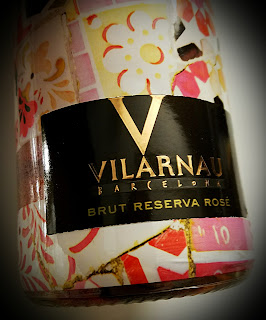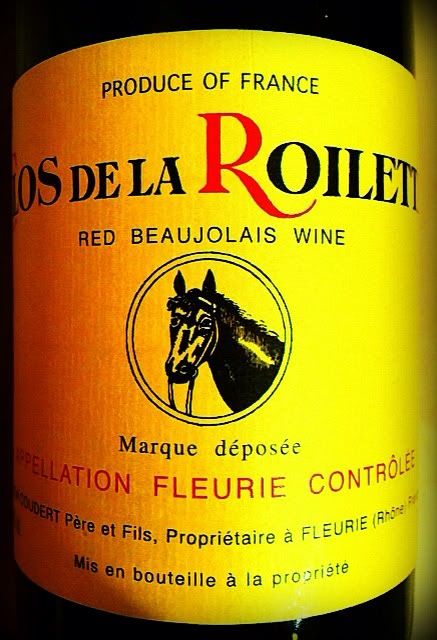With Valentine’s Day upon us, it’s a good time to pop open a dessert wine or two - sweets for your sweetie.
Fresh from receiving accolades as the top wine region of 2014 from Wine Enthusiast magazine, the wineries of New York’s Finger Lakes held a virtual tasting event featuring some of their notable dessert wines. You can read about the bubbly by
clicking here, and below is a listing of the dessert wines featured in the event, staged by the
Finger Lakes Wine Alliance with samples provided to me for the purpose of participating.
Goose Watch Winery Classic Cream Sherry
Goose Watch Winery is owned and operated by
Dave Peterson’s family, stewards of the vineyard since 1997. They also own Swedish Hill Winery, so they keep pretty busy in the winemaking biz. Goose Watch overlooks Cayuga Lake, providing a scenic backdrop for vineyard manager
Rick Waite and winemaker
Derek Wilber while they work.
The Goose Watch menu includes Viognier, Pinot Grigio, and Merlot with some unusual varieties like Aromella, Traminette, Melody, Diamond and Lemberger thrown into the cool-climate mix.
Classic Cream Sherry by Goose Watch is made using both red and white grapes, and plenty of them. Native American, hybrid and
vitis vinifera varieties are included - everything from Chardonnay to Cabernet Franc to Cayuga White and Catawba contribute to this wine.
It is produced using a solera process. New barrel-aged vintages of the sherry components are introduced each year, so the blend grows by a year each vintage. It's the aging that gives the wine its incredible flavor. New additions are warmed, then oxygen-injected over six weeks or so, which "gooses" the aging process. In the barrel, the wine is exposed to extreme temperatures - both hot and cold - to further stimulate the aging. Most of the barrels used in this process are old and well worn, to avoid imparting too much oak influence to the wine.
Alcohol is hefty, at 18% abv, while the 12% residual sugar more than justifies the wine's categorization as a dessert type. At $16 for the half bottle, it's one of the better dessert wine buys you are likely to find.
The Goose Watch Winery
Classic Cream Sherry looks fabulous. The deep amber-brown color is even darker than bourbon. The high alcohol content is noticeable on the nose, but so is a strong whiff of raisins, caramel and burnt brown sugar. The mouthfeel is full and lush, with a very soft essence that plays counterpoint to the heat of the alcohol. Raisins, caramel, baked apples, mocha and a splash of lime decorate the palate, with the fruitier aspects lasting into the finish. The moderate acidity feels a little lively on the tongue, but the softness isn't spoiled.
Boundary Breaks 2012 Late Harvest Riesling #90
The east side of Seneca Lake offers somewhat milder weather in New York's Finger Lakes region due to the depth of the lake and the prevailing winds. The extremely deep, glacier-cut lake features a churning effect, in which the colder and warmer waters exchange levels and help moderate the temperatures in the vineyards.
Boundary Breaks Winery resides on that eastern shore. Established by
Bruce and
David Murray in 2007 - on a farm that never had a vineyard on it - the winery specializes exclusively in Riesling, in five different styles.
Vineyard manager
Kees Stapel assists several moonlighting winemakers at Boundary Breaks:
Peter Bell of Fox Run,
Kelby Russell of Red Newt and
Ian Barry of Barry Family Cellars. All contribute to the various wines in Boundary Breaks' cellar, but Barry is the winemaker of record for this late harvest Riesling.
The Boundary Breaks 2012
Late Harvest Riesling #90 is named - er, numbered - for the Riesling clone from which it comes: Neustadt #90. The wine underwent a slow fermentation in stainless steel tanks and reports an alcohol level of 14.2% abv and a whopping 12.7% residual sugar number. The winery's website comments on the mid-December harvest for these grapes: "At this time of the year, the fruit has become a bronze color and many berries have de-hydrated and wrinkled into raisins. This produces a dense Riesling nectar that retains its acidity alongside its flowing richness." An apt description. It retails for $30 per half bottle.
A light golden color, the wine smells a bit like pears and a bit like apricots, with a lovely, light note of honeyed petrol coming through. The taste is gorgeous, as befits a dessert wine. The sweetness is not cloying, thanks to a nice acidity - not razor-sharp, but noticeable. It is, to be sure, dessert. It also fits well with salty almonds.
Standing Stone Vineyards 2013 Riesling Ice Wine
Standing Stone Vineyards has an old school look about it - farmhouse and all - but
Marti and
Tom Macinski founded the business in 1991. Marti is the winemaker, assisted by
Jess Johnson.
The vineyards were planted in the early 1970s, and a notable block features a planting of Saperavi, an old
vinifera grape that makes a dark red wine.
The 2013
Riesling Ice Wine is one of four dessert wines they make - they also sweeten up Chardonnay, Gewürztraminer and Vidal grapes. They are not true ice wines, in that the grapes are not harvested frozen but frozen after picking late in the season.
Production is limited, at just 198 cases. The retail sticker shows $25 for the half bottle. The wine has an incredible 20% residual sugar and shows 12.4% abv on the alcohol side.
This is one beautiful wine, the color of a very rich apple juice or bourbon. The aromas are just as beautiful, with apricots, pears and tart apples bursting from the glass. The palate follows suit, with the apple flavor showing a little stronger and some peaches thrown into the mix. The acidity is delightfully zippy, but the mouthfeel is oily and viscous. This wine is fresh and clean and makes a great, light dessert.
Wagner Vineyards 2013 Riesling Ice Wine
Winemaker
Ann Raffetto has been with
Wagner Vineyards for three decades, but that only qualifies her for newby status there. As one of the oldest Finger Lakes wineries - and the first on Seneca Lake's eastern shore - There have been five generations of grape growers toiling in the 200-acres of vineyard-with-a-view, a quarter of which is planted to Riesling grapes.
The grapes for the Wagner 2013 Riesling Ice Wine were not taken while frozen, but picked after traditional harvest and frozen after picking. They say this process helps the grapes retain their natural acidity. At 24% residual sugar, this wine is super-sweet and with alcohol at 12.1% abv, it is very near the same content as a table wine from this area. 1400 cases were produced, and the half-bottle sells for $25.
The Wagner Ice Wine shows pale gold in the glass, with a nose of dried apricots and a beautiful floral aspect. Alcohol also hits the nose a bit stronger than I would imagine, at just 12.1%. The palate has a lovely layer of the earth filtering the sweetness of the peach and tropical fruit flavors. The wine is rather viscous and sports a great acidity. Pair it with an apple pie or drizzle it on vanilla ice cream. Or both.
Knapp Winery and Vineyard 2013 Vidal Blanc Ice Wine
Knapp Winery is located close to Seneca Falls, on the shores of Cayuga Lake. It opened for business in 1984, and winemaker
Steve DiFrancesco, vineyard manager
Chris King, and cellar master
Richard Iddings combine to make wines that showcase the great
terroir of the Finger Lakes.
The Vidal grapes for this sweetie were picked in late November, when the temperature was 14 degrees Fahrenheit. They were pressed while frozen, which results in more concentrated aromas and flavors. This is the sweetest of the wines featured here, with residual sugar at 24.7%. Alcohol is slightly reduced, at 11.36% abv. Only 54 cases were produced and the half-bottles retail for $25.
The Knapp wines I have experienced really show a great earthy quality, and the Vidal Ice is no exception. The earthiness does sit a bit farther behind the fruit in this dessert wine, though. There is plenty of fruit on the nose - pineapple, pear and peach are draped in honey - while a beautiful floral aspect leads the way. Extremely viscous in the mouth, the Vidal does not disappoint in sweetness. It's a beautiful and delicious wine, with flavors of pear, peach and tropical fruit. The finish lets a bit of the earthiness linger with the sweet for an amazing counterpoint.
The winery says you can enjoy the Knapp
Vidal Blanc Ice Wine on its own or with a ripe cheese. Any kind of savory tidbit - salty pretzels, almonds - will be set off beautifully against the counterpoint of the sugar found in this wine.
Follow Randy Fuller on Twitter











